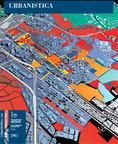planning innovation job resilience paesaggio urban projects sprawl newsletter land use special news energy infrastructures anthropology neighborhood urban design architecture cities safety & security collaborative urban design tools and techniques brownfields premio tesi di laurea European policies landscape digitalization
Practices and instruments for the quality of the ‘Space of day-to-day life’
qualità, quality, abitabilità, abitability, luoghi, places,
education & research
Giovanna Bianchi
I believe we can share the idea that beauty, also understood as a morphological quality, is a need for the quality of living also in daily places; that master plan is not able to directly produce the morphologic-functional quality of interventions but it can only set up preconditions and it is therefore necessary for local administrations to identify procedures leading incrementally to the shaping of interventions also for the fragments of the ‘normal’ city, which are often of moderate dimensions, frequently mainly of a residential nature. If we recognize that other ‘concerns’ - framework conditions: residence, public proximity services and areas - are coming up besides the polarization on city competitiveness, it follows that it is necessary to test in design and planning also structure and organization forms of city spaces having local relevance. And it is just in order to deal with local issues of urban nature that I consider useful experimental practices, which are fit to set up rules directly producing space organization and formalization effects.
This article appears in issue 136 of Urbanistica (pag. 80).




Planum
The Journal of Urbanism
ISSN 1723-0993
owned by
Istituto Nazionale di Urbanistica
published by
Planum Association
ISSN 1723-0993 | Registered at Court of Rome 4/12/2001, num. 514/2001
Web site realized by ChannelWeb & Planum Association | Powered by BEdita 3

